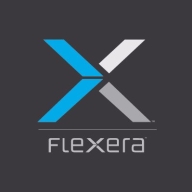

Flexera Cloud Management Platform and Spacelift are competing cloud management solutions offering distinct advantages in cloud management. Spacelift appears to have the upper hand in agility and scalability, attracting organizations building dynamic infrastructure.
Features: Flexera Cloud Management Platform emphasizes features like comprehensive cloud cost management, optimization, and strong governance capabilities. Optima, a notable feature, aids in extensive cost management, and governance helps mitigate compliance risks. Spacelift facilitates infrastructure automation and CI/CD, with standout features like Terraform support and policy-as-code, fostering streamlined DevOps processes.
Room for Improvement: Flexera Cloud Management Platform could improve its complexity in deployment to better cater to medium-sized enterprises. Enhancing user-friendliness and reducing the learning curve could attract diverse users. Spacelift might focus on expanding its feature set beyond Terraform to cover more automation tools. It could enhance its enterprise-grade governance features and provide more customizable policy options for varied compliance needs.
Ease of Deployment and Customer Service: Flexera Cloud Management Platform delivers a powerful but complex deployment process, offering extensive customer support options tailored to large enterprises. Spacelift ensures a straightforward deployment model paired with responsive customer service, suitable for smaller teams or those new to infrastructure automation.
Pricing and ROI: Flexera Cloud Management Platform involves higher setup costs, which can lead to significant ROI for large-scale operations needing cost and compliance management. Spacelift offers a cost-effective setup with potential for quicker ROI, especially for organizations concentrating on CI/CD pipelines and developer-friendly environments.
| Product | Market Share (%) |
|---|---|
| Spacelift | 1.0% |
| Flexera Cloud Management Platform (CMP) | 2.1% |
| Other | 96.9% |

Flexera Cloud Management Platform (CMP) offers comprehensive capabilities for managing cloud environments, enabling businesses to control costs, optimize resources, and ensure compliance across multiple cloud providers.
Flexera CMP is designed to streamline cloud management by providing a unified platform that supports automation, reporting, and policy enforcement. It empowers IT departments to efficiently manage multi-cloud environments by offering tools for workload optimization, visibility into cloud usage patterns, and governance features. Flexera CMP's integrations and customizable workflows enable seamless deployment and management of applications, reducing the complexity often associated with cloud operations.
What are the key features of Flexera CMP?Flexera CMP is particularly valuable for industries with complex IT environments such as finance, healthcare, and technology, where effective cloud management is critical to maintaining continuous operations. By leveraging Flexera CMP, these industries can optimize their cloud strategies, balance workloads efficiently, and ensure data security and compliance, thereby driving business transformation.
Spacelift provides a sophisticated infrastructure management platform with key features such as Drift Detection and Terraform integration, simplifying complex deployments and enhancing user workflows through an intuitive interface.
Spacelift excels in modernizing infrastructure management by integrating smoothly with Terraform, using a pull request-based approach for visibility into logs. It automates change detection using GitOps from GitHub and supports AWS connectivity with credential management. Despite its strengths, some users find room for improvement in supporting smaller enterprises and offering more seamless cloud integrations with self-hosted versions. Handling of HashiCorp Vault secrets and cumbersome notification webhooks may require additional setup effort.
What are the most valuable features?In specific industries, Spacelift is primarily utilized for infrastructure management and deployment across platforms like AWS, Azure, and GCP. In banking architecture, it replaces Terraform Enterprise, ensuring secure and efficient operations. Projects like Google Fiber benefit from its capability to import and manage data effectively, engaging users with HashiCorp Language and GitHub for CI/CD integration.
We monitor all Cloud Management reviews to prevent fraudulent reviews and keep review quality high. We do not post reviews by company employees or direct competitors. We validate each review for authenticity via cross-reference with LinkedIn, and personal follow-up with the reviewer when necessary.